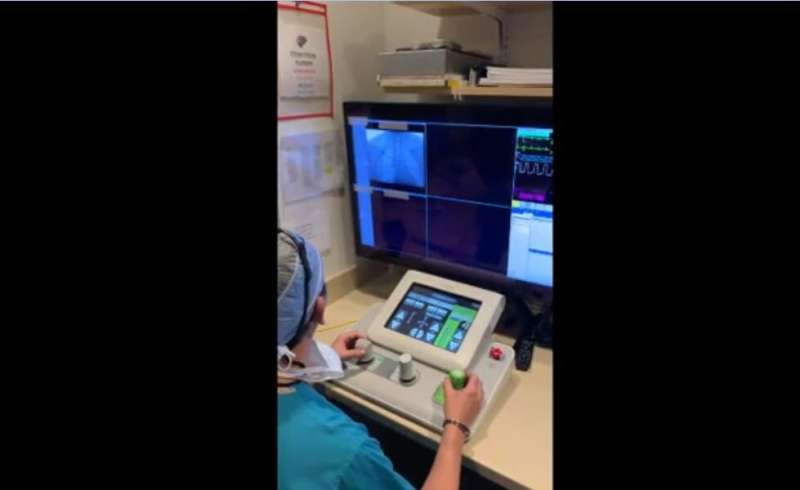Novel use of robotics for neuroendovascular procedures

Surgeons at the Sidney Kimmel Medical College at Thomas Jefferson University are pioneering the use of robotics in neuroendovascular procedures, which are performed via the blood vessels of the neck and brain.
A study by Pascal Jabbour, MD, Chief of the Division of Neurovascular Surgery and Endovascular Neurosurgery, demonstrated that the use of these robots to aid surgeons during diagnostic cerebral angiograms and transradial carotid artery stenting was both safe and effective. The research was published March 1st in the Journal of NeuroInterventional Surgery.
"This technology could be groundbreaking, acting as a precursor for remote stroke interventions," Dr. Jabbour said.
When a patient suffers from a stroke, time is of the essence because the blocked vessel must be opened as quickly as possible to prevent permanent damage. Patients living in remote geographic areas have further to travel for stroke intervention, and, often, by time they arrive at a stroke center, it is too late, explains Dr. Jabbour.
"These robots would allow us to intervene remotely on those patients," he said. "The patient would still be in the community and I would be sitting here at Jefferson controlling the robot."
In the study, Dr. Jabbour and colleagues tested the use of a next-generation robotic-assisted surgical platform on 10 patients undergoing either a diagnostic cerebral angiogram or carotid artery stenting. All of the procedures were successful with no complications encountered.
Jefferson is the first center in the country to perform robotic transradial carotid stenting. Currently, robots are only approved by the FDA for use in certain general surgery procedures and in interventional cardiology procedures.
Use of robots in neuroendovascular procedures would give surgeons more precise control over the microcatheter and the microwire, two tools threaded through a patient's blood vessels during these procedures.
In addition, physicians who do these procedures regularly will have less exposure to radiation from the X-rays used during the procedure because they can operate the robot from a separate room just outside the surgical suite. Eliminating exposure to radiation would allow surgeons to forgo wearing the heavy personal protective equipment, such as lead aprons, that is typically needed during these procedures.
"The next generation of robots are ready to be launched and as soon as they are approved by the FDA we will be able to move to the next step, which is performing interventions inside the brain," says Dr. Jabbour. "Jefferson will be on the front line of this technology, training the new generation of fellows on how to use these robots before any one else in the country."
More information: Kalyan Chekravarthy Sajja et al, Endovascular robotic: feasibility and proof of principle for diagnostic cerebral angiography and carotid artery stenting, Journal of NeuroInterventional Surgery (2020). DOI: 10.1136/neurintsurg-2019-015763


















